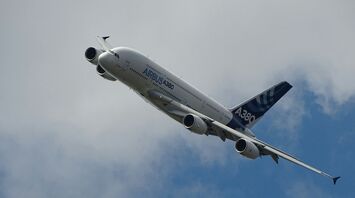Double Decker Business Class: The Next Premium Seating Revolution?

The concept of double-decker business class seating, introduced by Alejandro Nunez Vicente at the Aircraft Interiors Expo (AIX), is generating significant interest in the aviation industry. Known as "Elevated Class," this innovative design stacks first-class seats above business class seats, promising to revolutionize the premium in-flight experience.
What is the concept?
The Elevated Class concept aims to maximize space by vertically stacking seating in the middle of the aircraft cabin. This design provides an impressive amount of room compared to traditional seating arrangements. In the center aisle, there would be a 2-2 configuration at the lower level, featuring business class seats, each with direct aisle access. These seats offer integrated storage for two carry-on suitcases and a backpack, a width of 24 inches (61 cm), and a bed length of 88.6 inches (2.25 m), slightly longer than Lufthansa’s Allegris business class seats.
What about first class?
Above the business class seats is a single "throne-style" first-class seat centered in the cabin. This elevated position allows for additional comfort and space, avoiding the confined feeling common in some first-class designs. The first-class seat, while only certified for one passenger during critical flight phases, is large enough to comfortably accommodate two people for dining or entertainment. It features integrated storage for two carry-on suitcases and two backpacks, a seat width of 39.8 inches (101 cm), and a bed length of 79.5 inches (2.02 m).
Answering questions on the product
Cabin Segregation: Alejandro acknowledges the concern of first-class passengers sharing a cabin with business class travelers. He suggests that this design offers a first-class experience at a lower entry price by integrating it into a business class layout. This approach could attract customers seeking a premium experience at a reduced cost.
Accessibility: Accessibility is a key consideration, with the lower row being easier to access compared to typical business class herringbone configurations. While the upper rows pose more challenges, the steps are designed to be as accessible as standard staircases. However, the concept acknowledges that upper-row accessibility for wheelchair users is not feasible, though there is space to store a folded wheelchair under the lower seats.
Feasibility and Certification: The feasibility of certifying this concept benefits from prior studies conducted for economy class stacked seating, as the Elevated Class design involves fewer passengers and less weight. Although still a concept, these preliminary studies support the potential for certification.
Customization: Airlines can customize up to 85% of the Elevated Class structure. The core structure remains consistent, but the surrounding elements, including seats and bed structures, are fully customizable to meet airline-specific needs.
The Elevated Class concept by Alejandro Nunez Vicente represents a bold step towards transforming the premium in-flight experience. By effectively utilizing vertical space and offering enhanced comfort, this innovative design could redefine business and first-class travel in the near future.



















